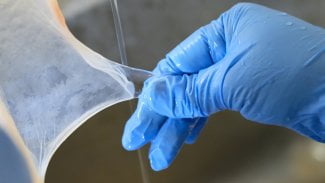vcs
NAME
vcs, vcsa - virtual console memory
DESCRIPTION
/dev/vcs0 is a character device with major number 7 and minor number
0, usually of mode 0644 and owner root.tty.
It refers to the memory of the currently
displayed virtual console terminal.
/dev/vcs[1-63] are character devices for virtual console
terminals, they have major number 7 and minor number 1 to 63, usually
mode 0644 and owner root.tty.
/dev/vcsa[0-63] are the same, but
including attributes, and prefixed with four bytes giving the screen
dimensions and cursor position: lines, columns, x, y.
(x = y = 0 at the top left corner of the screen.)
These replace the screendump
R ioctl s
of
console(4),
so the system
administrator can control access using file system permissions.
The devices for the first eight virtual consoles may be created by:
for x in 0 1 2 3 4 5 6 7 8; do
mknod -m 644 /dev/vcs$x c 7 $x;
mknod -m 644 /dev/vcsa$x c 7 $[$x+128];
done
chown root:tty /dev/vcs*
No
ioctl(2)
requests are supported.
FILES
/dev/vcs[0-63]
/dev/vcsa[0-63]
/dev/vcsa[0-63]
VERSIONS
Introduced with version 1.1.92 of the Linux kernel.
EXAMPLE
You may do a screendump on vt3 by switching to vt1 and typing
cat /dev/vcs3 >foo.
Note that the output does not contain
newline characters, so some processing may be required, like
in fold -w 81 /dev/vcs3 | lpr or (horrors)
setterm -dump 3 -file /proc/self/fd/1.
The /dev/vcsa0 device is used for Braille support.
This program displays the character and screen attributes under the
cursor of the second virtual console, then changes the background color
there:
#include <unistd.h>
#include <stdlib.h>
#include <stdio.h>
#include <fcntl.h>
int
main(void)
{
int fd;
char *device = "/dev/vcsa2";
struct {unsigned char lines, cols, x, y;} scrn;
char ch, attrib;
fd = open(device, O_RDWR);
if (fd < 0) {
perror(device);
exit(EXIT_FAILURE);
}
(void) read(fd, &scrn, 4);
(void) lseek(fd, 4 + 2*(scrn.y*scrn.cols + scrn.x), 0);
(void) read(fd, &ch, 1);
(void) read(fd, &attrib, 1);
printf("ch='%c' attrib=0x%02x\n", ch, attrib);
attrib ^= 0x10;
(void) lseek(fd, -1, 1);
(void) write(fd, &attrib, 1);
exit(EXIT_SUCCESS);
}



















